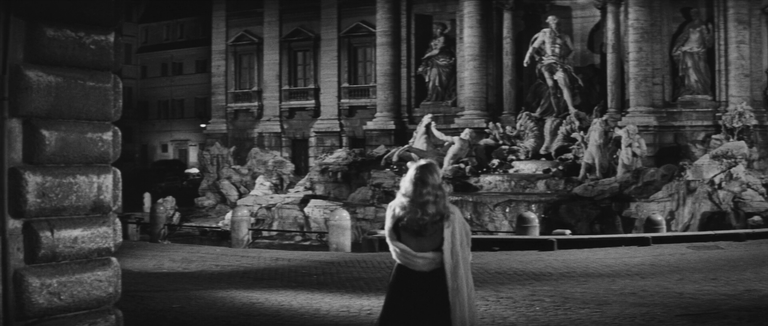
I have been on a bit of an Italian film journey as of late, roaming through many lists and archives of the entries of Italian cinema that came and went in the many decades prior. Focusing specifically on the cultural, the black-and-white, and the very human. This is not something unusual for me, I often roam through a specific country's library of cinema: Chinese, Russian, French, Japanese, and quite literally anywhere and everything that may greet my eye. I often find myself in somewhat of a trance in which specific styles or eras come to my attention, grasping my interest and time like a vampire that thrives on the removal of one's productivity. It is in such moments that I feel most connected to the world of filmmaking.
Now, this is not like my usual posts where I either review a film or write about a few thoughts over the things I have been watching in some rambling nonsense of a passionate filmmaker; that will come much later. This is my admiration for a film I have seen before, but many years ago without the full appreciation or attention given to it. A film that is incredibly famous, and if not the most famous Italian film, La Dolce Vita.
It is often that I spend much of my time admiring the techniques behind films while I watch them, and I often take moments to rewind or pause the film just to see a specific shot again and perhaps take screenshots. Some of these screenshots end up in my posts here on Hive, many of them are left to sit in a photography folder I have dedicated to the many films I have seen over the years. Containing my favourite perspectives, colours, and emotions conveyed within the films. As part of something new I want to do here on Hive, I want to start sharing these screenshots. Spreading the beauty and craftsmanship, perhaps in hopes that others too notice them and take the time to give them a chance.
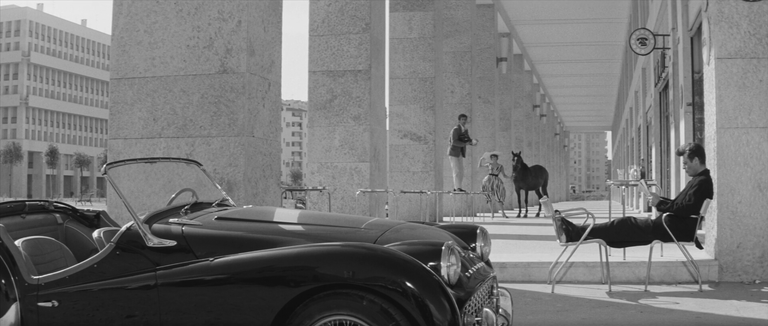
La Dolce Vita is a film that looks at the world of the upperclass, the fashionable and well-lived. We witness how such a luxurious life comes with a total loss of privacy and plenty of drama, exacerbated by the endless crowds that follow them and poke at them in hopes of getting a story. While there is much more in terms of characters and narrative, it is a film that portrays such a life with a grand scale in architecture.
Cinematographer Otello Martelli perfects the ways he portrays these characters, and the active roaming of Rome's lifestyles, deep within the quiet, maze-like streets, bending into nothing. A claustrophobia seen more as dream-like through a frequent consideration of scale, switching from the narrow to the grand, the open, the almost magical in parts. There's a strong attention to the very wide, the almost brutalist style of architecture as a result of a more modern Italy and its tight regime in terms of political reign.
I noticed with frequency an attention to photography fundamentals, where leading lines are used within the environment to direct our attention to the main subject, where the image remains beautiful and displays a world of luxury. It is, after all, in these lives of actors and writers that perfection not only exists, but must be seen with an active pursuit.
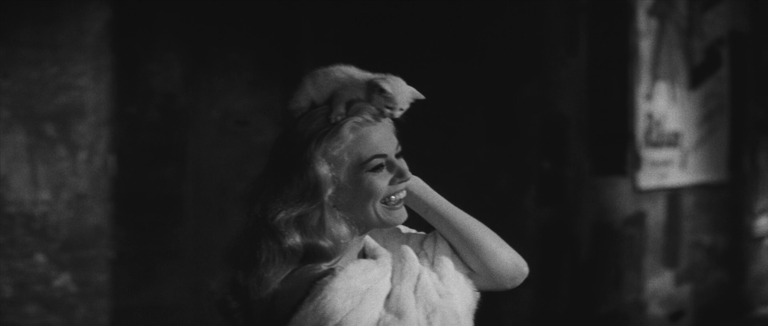
It comes as no surprise that this portrayal of scale comes from the artistic vision of director Federico Fellini, through his understanding of the potential that anamorphic lenses can provide alongside a 2.35 : 1 aspect ratio -- to which I am a massive fan of. I could probably write posts purely on the subject of this aspect ratio and anamorphic lenses! It is through these lenses that everything grows in size, our perspective of the world grows in width, and the luxurious and glamourous work beautifully alongside the scale of the locations.
The depth-of-field they offer provides a really beautiful, almost mystical glow as the backgrounds contain oval shapes as the foreground's subject stands out. A slight vignetting visible that creates a more circular separation again between background and foreground.
These lenses work under most environments, but truly shine when the subject is a person. And there are plenty of shots in which the camera is focused on a single person within the frame, following them around, from one event to another.
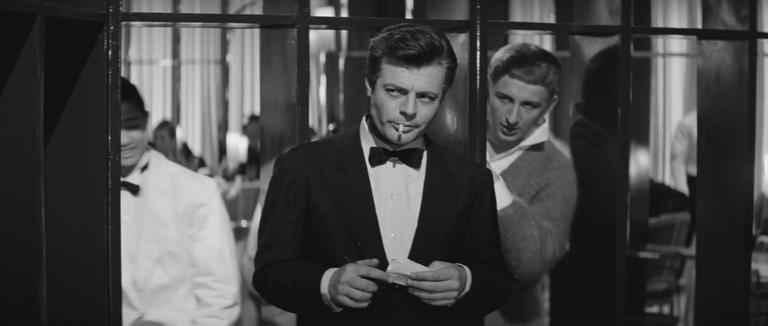
It is also these moments in which I found myself pausing the film the most, to cling on for an extra few seconds knowing the characters and the photography would align to create a single frame of perfection, alongside many others. And it is when these static perspectives appear that I found myself taking the most screenshots. Even if the camera a few moments later began to roam throughout the scene's environment, to which I'll write about more later.
We hang on the expressions of characters for sometimes significant periods of time in these static shots. Where the wide focal length of the lens allows for more detailed character construction and storytelling through their actions. The gentle leaning over a table for a character to light a cigarette through the use of a candle's flame, only to sit comfortably with a posture of class; one leg neatly folded over the other.
We see the depth of a character's thoughts and intentions in these moments, as they observe the others and events in the distance, out of frame. Yet we never fail to see them looking their best in such moments. Shortly after, we cut to those off-frame events, and then back to the expressions and actions, amplifying the deep-thought they may be in, almost in clear contempt for those with significant wealth around them, as if to not be judging them, but to be evaluating and comparing that wealth.
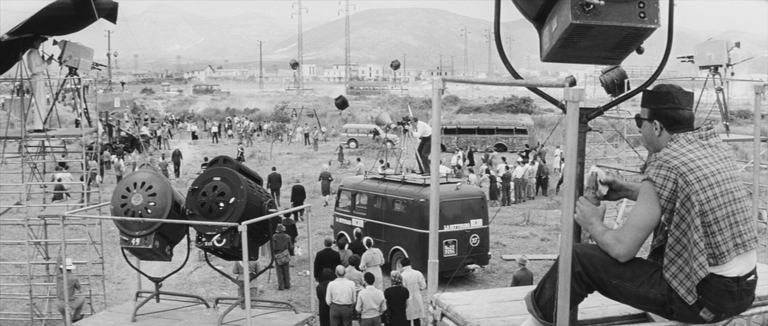
And when our beautiful anamorphic lenses, throwing light at the grainy 35mm black-and-white film stock held within the best cameras of the 50s, are not sat still, they are in motion. We roam through locations as if we just entered them ourselves, starting from one side and reaching towards the other. Seeing the many faces and events of life unfolding all at once. These shots are often long, most likely created using a crane and dolly given the steadicam was to be created another two-and-a-half decades later! Merely adding to the impressive nature of these scenes.
They add to the context, the luxury and chaotic lives of film stars and writers. And again the scale of such environments, where plenty can be seen doin many things all at once in their numbers. I loved this attention to detail, and how the camera is used to convey the feeling that we are part of this world, not just witnessing it, but contributing to it as we weave between people.
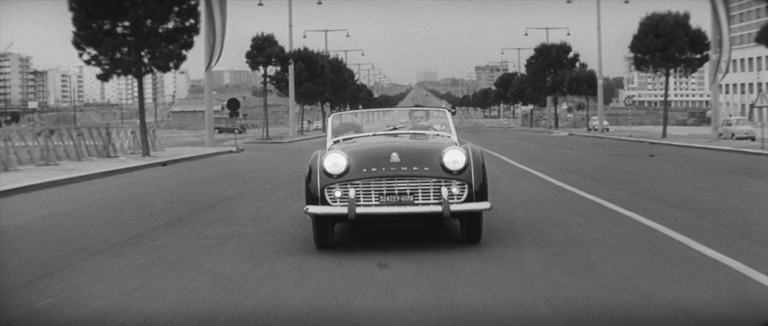
I also want to stress that all of these screenshots were taken just within the first hour of the film's incredibly long near three hour runtime. And there were some I didn't even use for this post. Perhaps I'll save them for a future review of La Dolce Vita, but I just had to write about it today and share just how beautiful this film is. Within just one hour and constantly taking time to stop and rewind, to really appreciate the perfection of the visuals in this film. I have no doubt that I will continue to do it as the film progresses for another near two hours.
Each moment of this film thus far seems crafted to as near perfection as possible, where the concepts of life and luxury within this era of Rome are at the forefront of all it has to say, as we witness through incredible acting and directing the growth of the characters. And by the way, it is incredibly hard to not just turn this into a review already. So I'm ending this here! I need something more to say when that time comes!
Hi @namiks, I feel an extraordinary joy to have stopped by this post. Your treatment of the film la Dolce Vita is impeccable and your appreciation of Fellini's cinema deserves applause, at least my applause!
The anamorphic lenses Fellini used gave an aesthetic and semantic touch not usually seen in other auteur filmmakers.
The perspective and out-of-field lenses invite us to think, and to try not to miss any detail (it is impossible not to watch it more than once to capture hidden messages in each frame rigorously designed by the great master of Italian cinema).
I once read that Federico Fellini drew the entire story board of his films. Can you imagine?
For me, this discovery made me admire him even more.
Honestly, I loved this homage you made to La Dolce Vita, to Otello Martelli's perfect frames, and to the master Federico Fellini.
Thank you for the really nice comment! I'm actually happy that somebody did end up enjoying it, to see the film beyond entertainment and into the technicals of it.
Absolutely! It's very dreamlike, especially in the areas that do display the more dated areas of Italy. For a film from its time, it's incredible. So much attention to the idea of what a film can and should do, and how you can manipulate that with the technology you have and the story you tell.
I've seen many others from that era, but nothing quite like La Dolce Vita in terms of quality in every aspect. It puts many of today's works to shame.